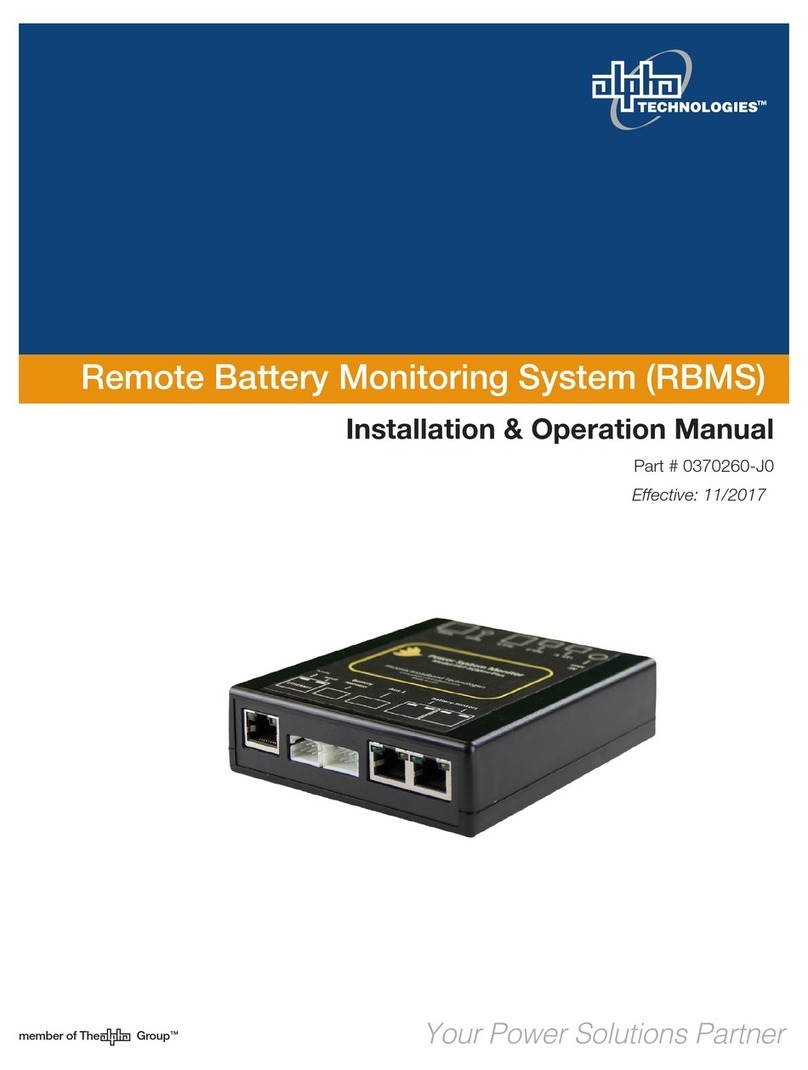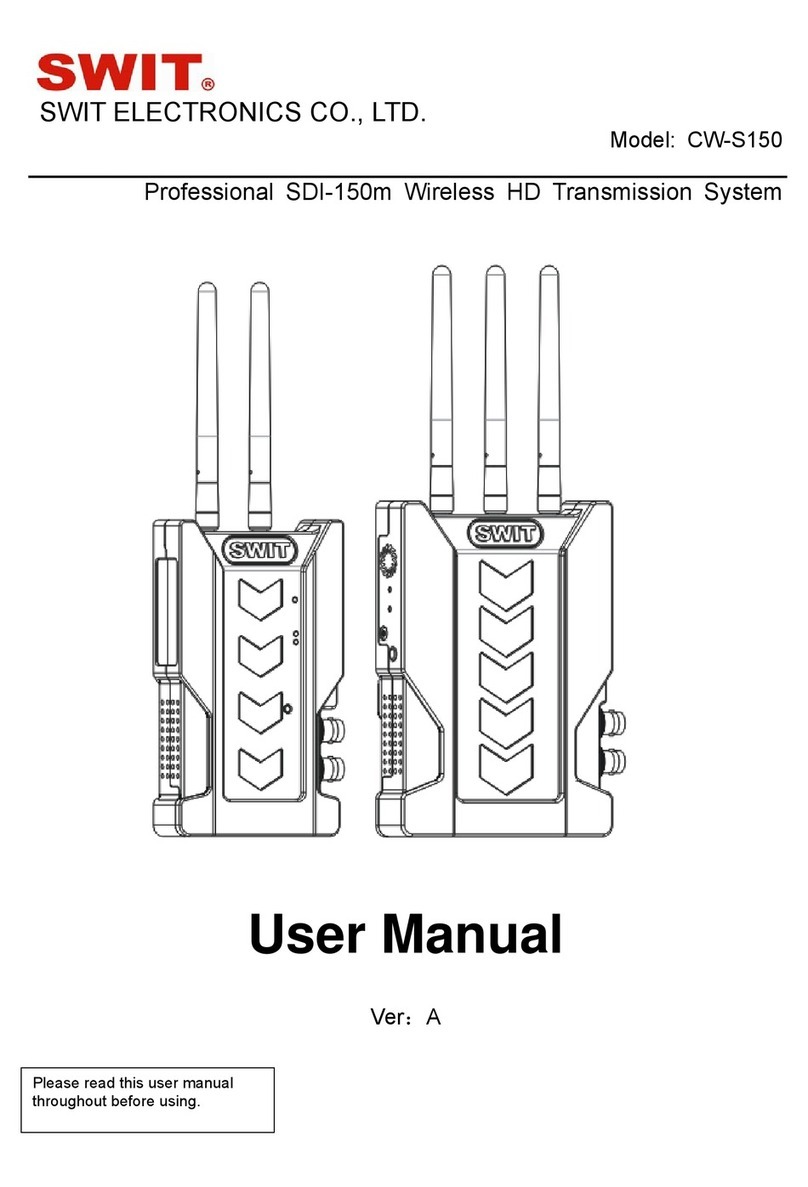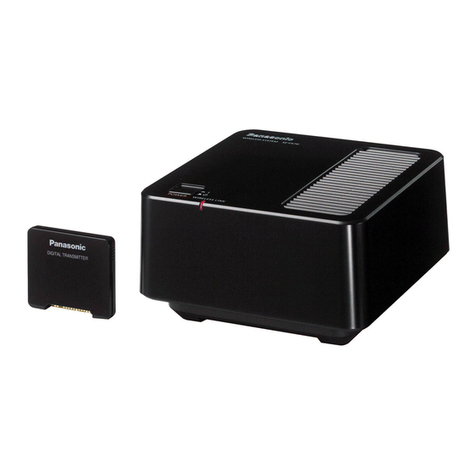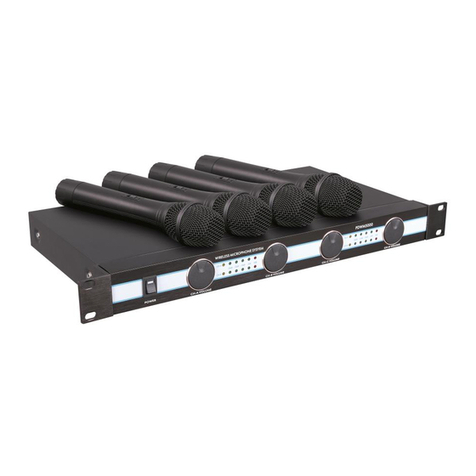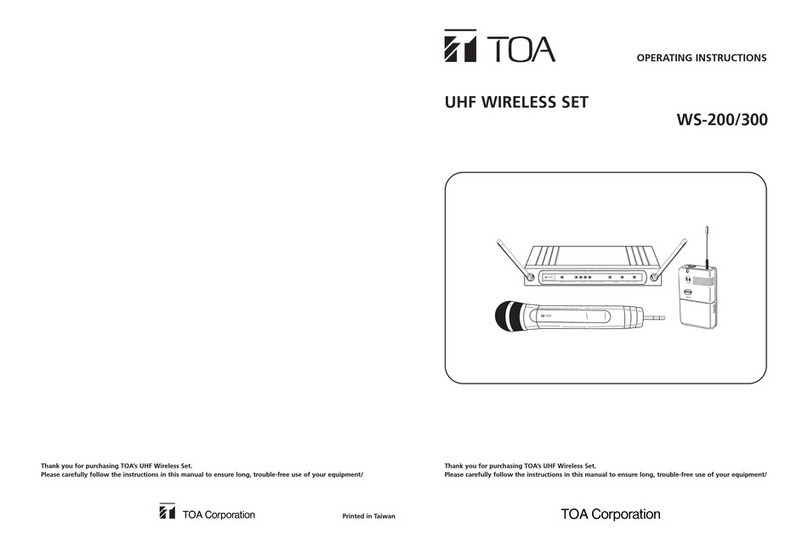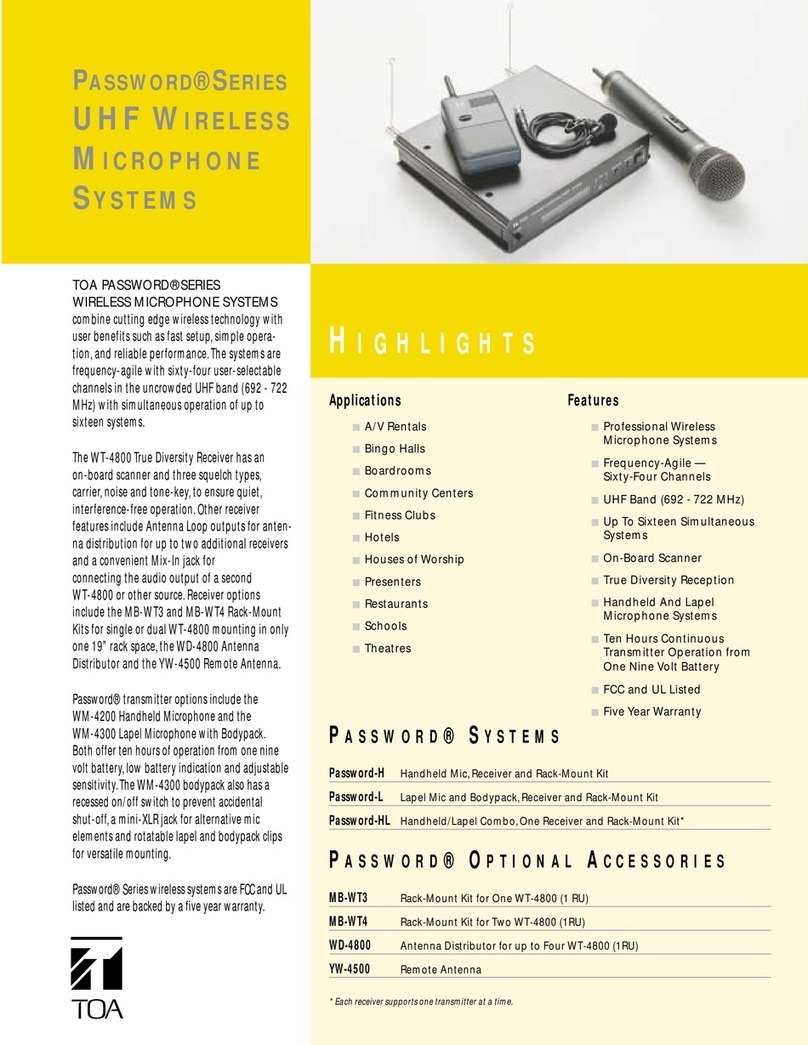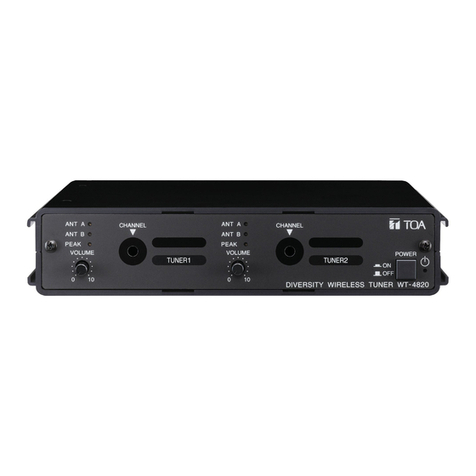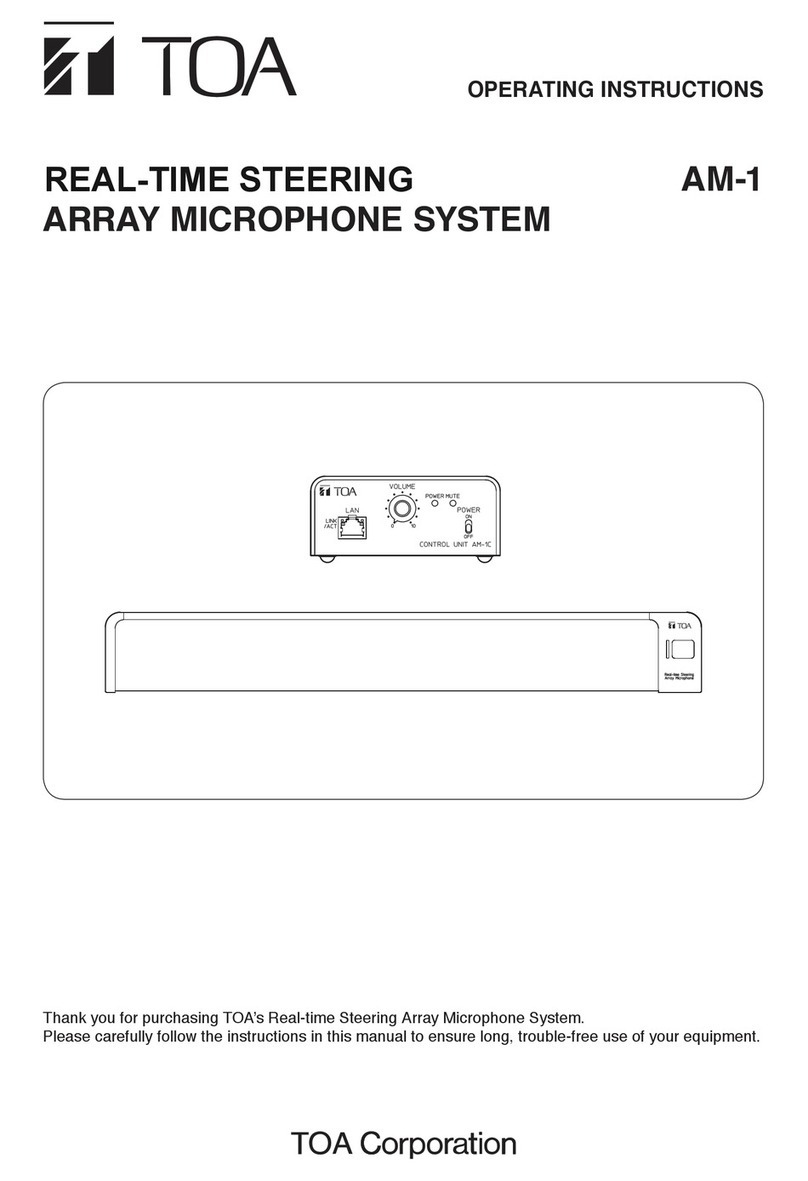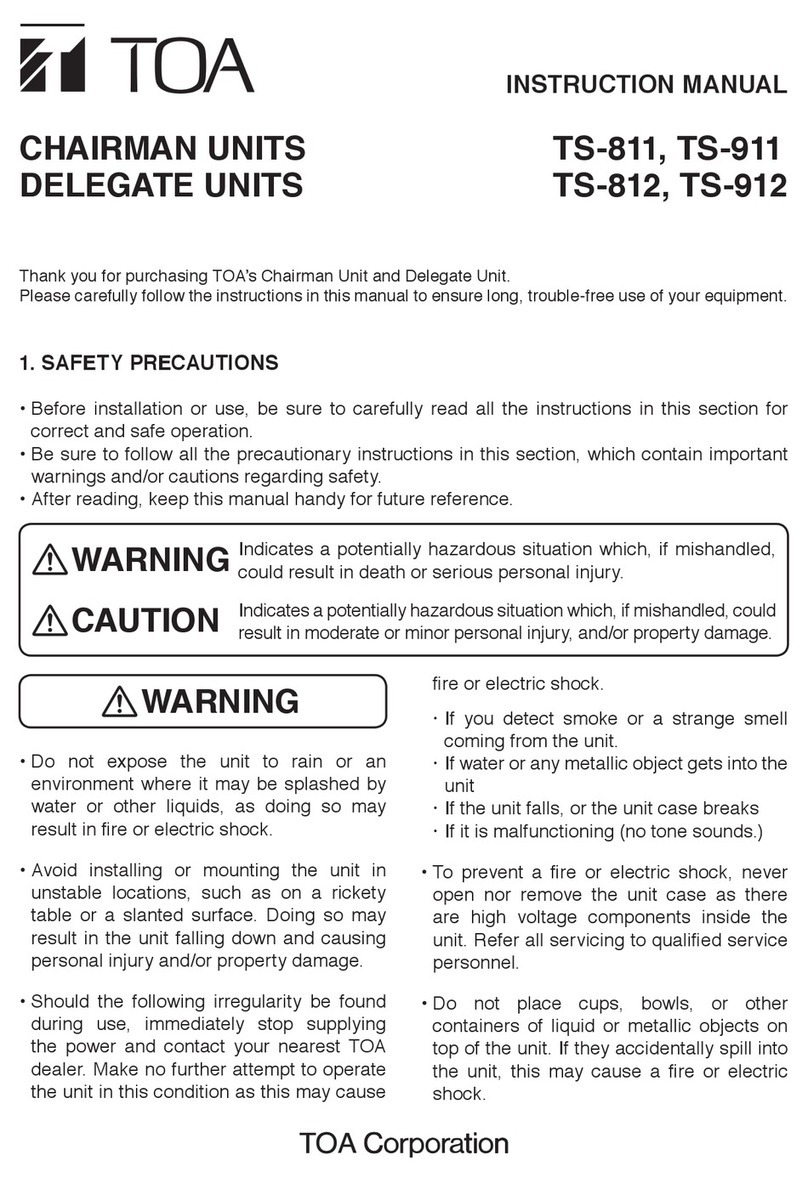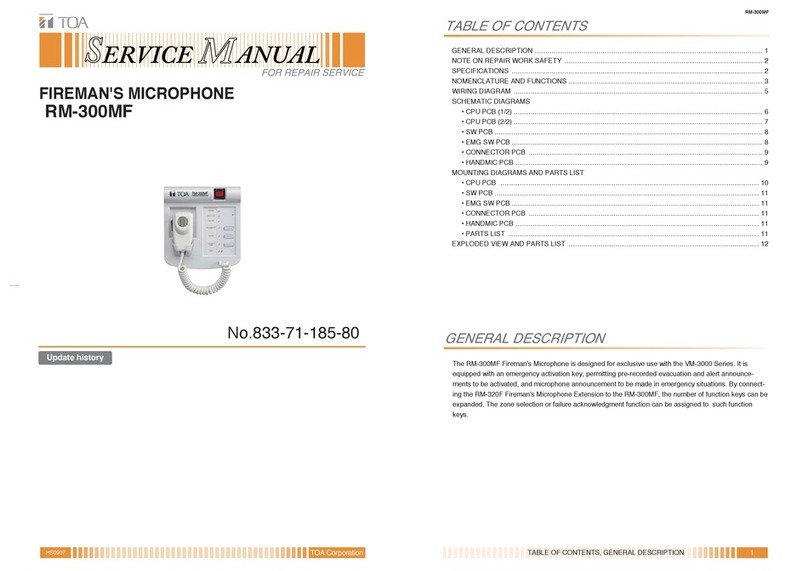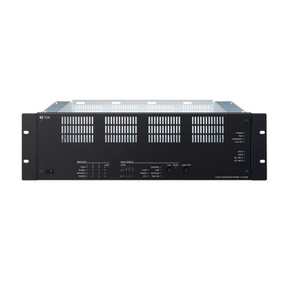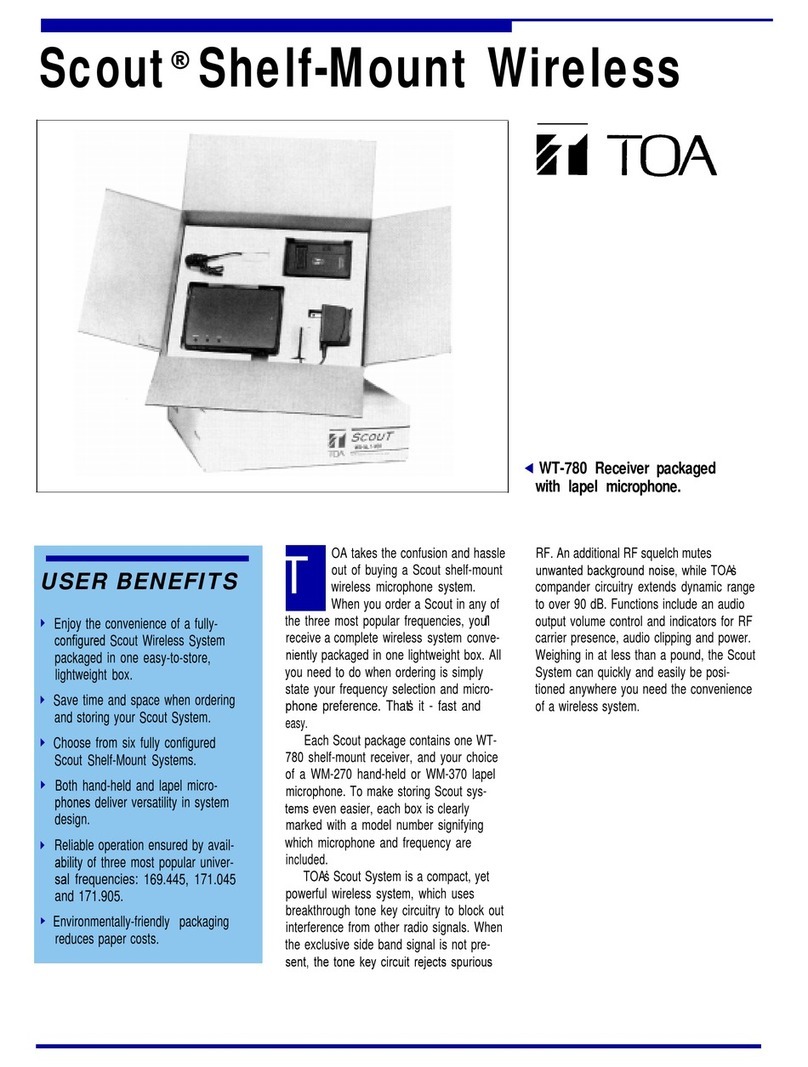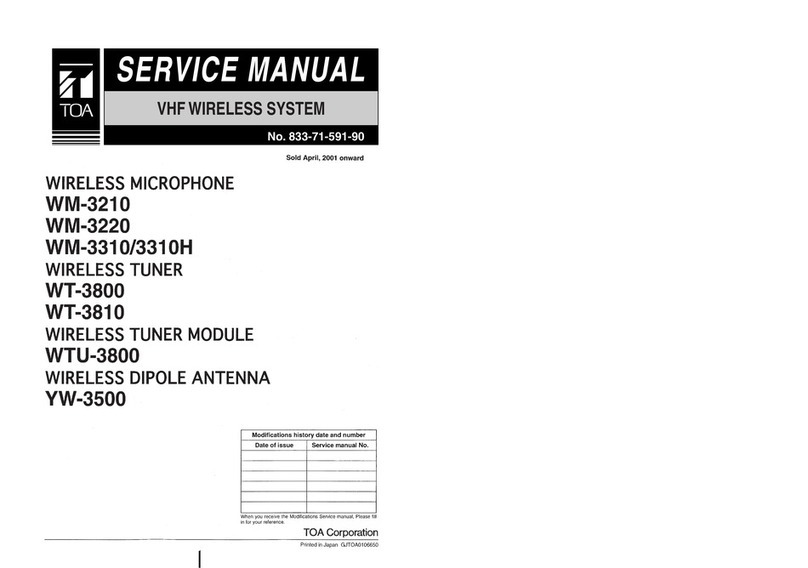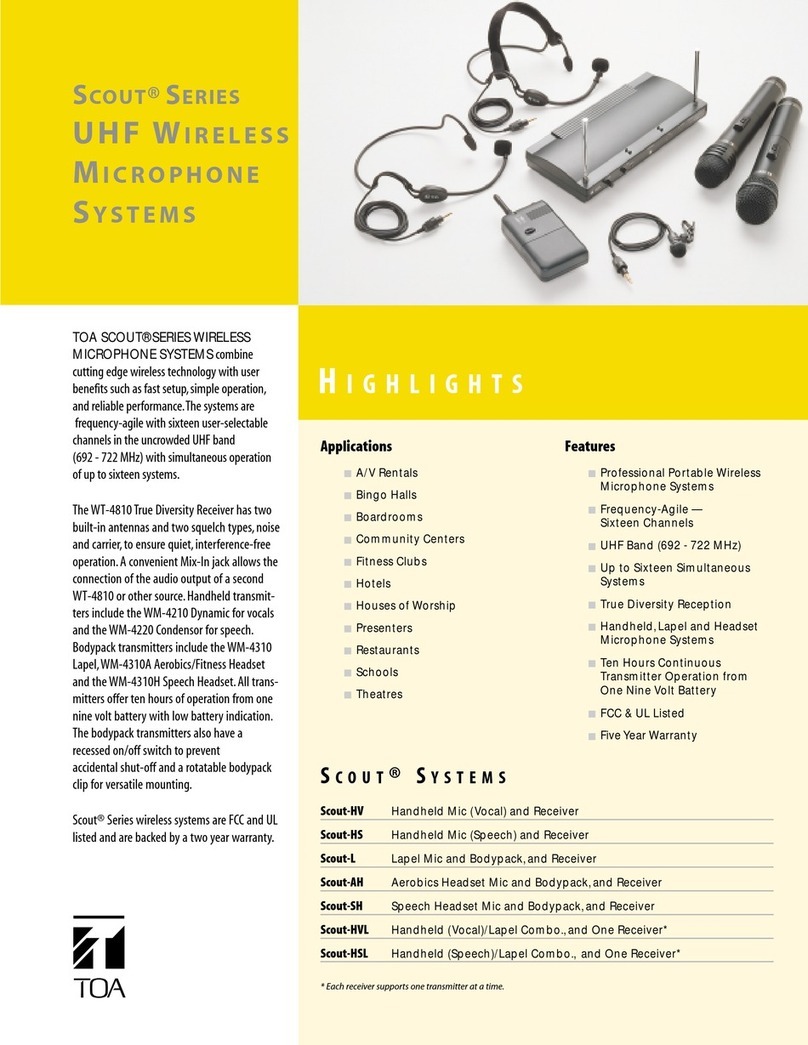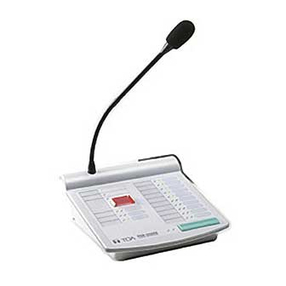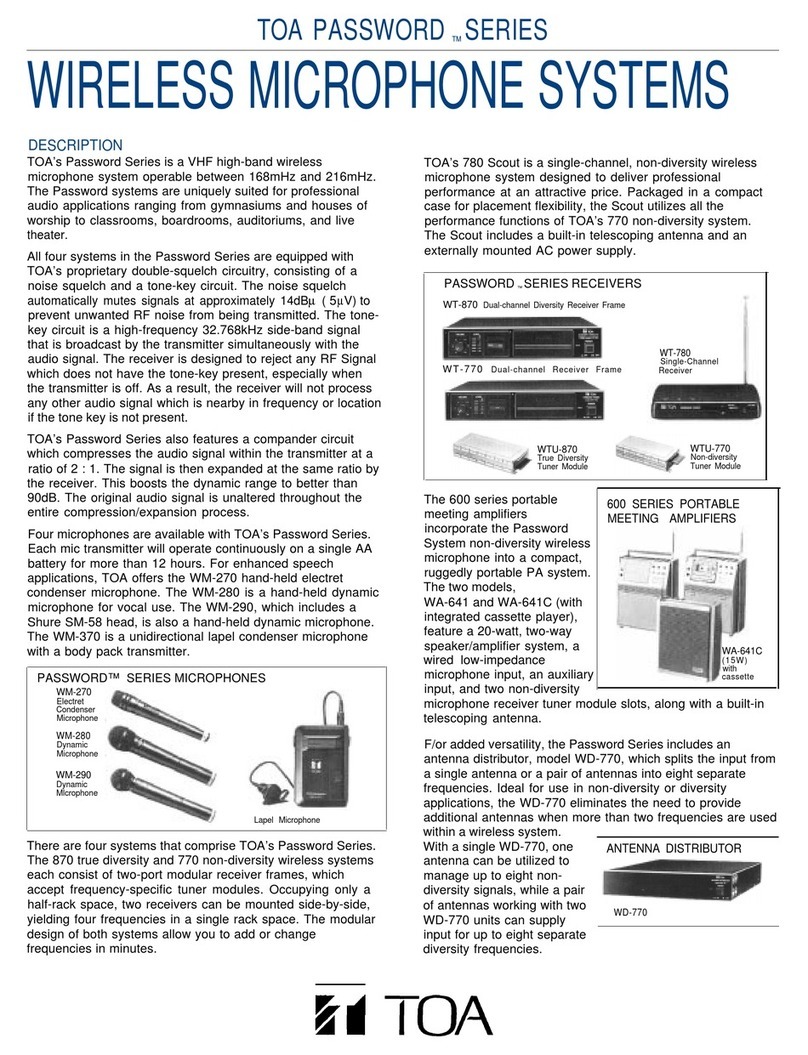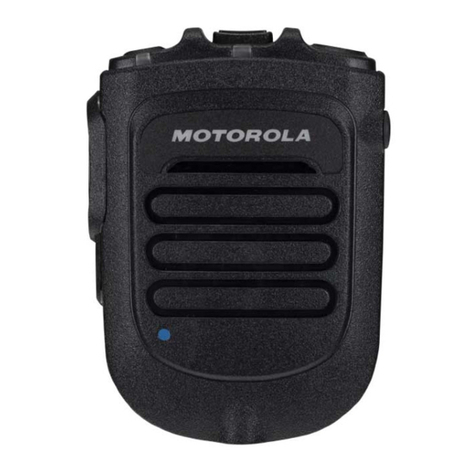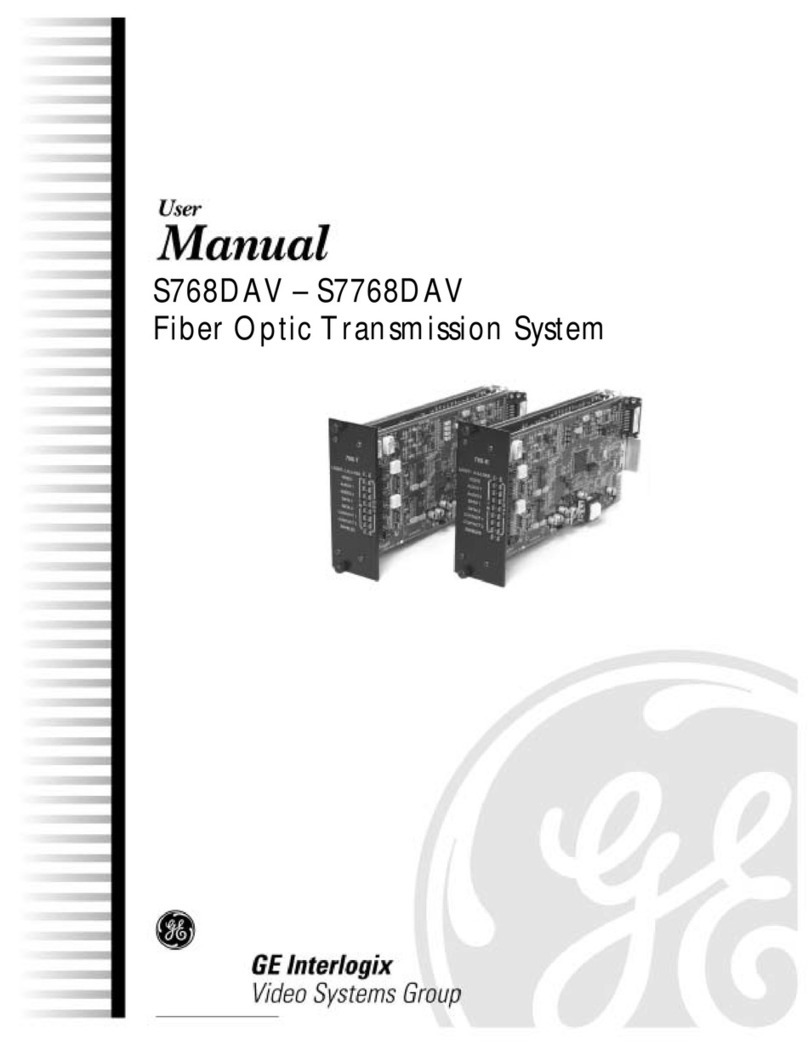that is clean and to the point. The front
panel of the TOA WT-4800 receiver con-
tains the output level control, a reen LCD
display (that shows bank, channel and
actual frequency), an antenna
diversity activity display,
the channel/bank selec-
tor and the ON/OFF switch. A Menu but-
ton accesses the Scanner feature, allowin
you to scan each bank for clear channels.
The rear panel offers switchable Mic/Line
XLR- and TRS-balanced outputs, as well
as a TS unbalanced 1/4-inch Mix input for
a second receiver or audio source if mixer
inputs are in short supply.
The antennae are connected by BNC con-
nectors, one on each side, as well as antenna
OUT BNC connectors for loopin into the
antenna inputs on other WT-4800 receivers.
Supplied with the system that we test-
ed was an AC/DC adaptor, a mini screw-
driver (for transmitter channel assi n-
ments), a mic stand clip for the hand-
held, a tie clip and foam windscreen for
the lavalier.
In use
I used the TOA wireless system with
quite a few artists over a three-month peri-
od. One of the artists I used it with was Lou
Rawls, who has the perfect satin-smooth
voice with which to test a mic. We found the
handheld WM-4200 to have excellent vocal
clarity, superior frequency response, and
nice off-axis rejection of unwanted sounds.
The TOA WM-4200 required very little EQ
adjustment to attain monitor stability at a
fairly loud SPL. I found the handheld pos-
sessed a nice warm quality and a very clear
and friendly quality in the sibilant ran e,
providin a natural, transparent vocal ran e.
I also tested the WM-4200 handheld mic
with saxophone, flute and acoustic uitar,
and found the results to be equally as ood.
Let’s face it, workin with the “lavalier”
sound live can be tricky, but the WM-4300
was fairly easy to EQ. The cardioid capsule
provided ood rejection of unwanted stray
sounds while providin a clear portrayal of
voice. I tried the lavalier mic on violin,
acoustic uitar, voice, and saxophone, and
I must say, I was impressed with the unco-
lored quality.
Summary
I had quite a bit of time to test, torture,
experiment, and otherwise play with the
TOA WM-4200, WM-4300 and WT-4800
system. I found the RF path to be clean,
clear and free of outside hits, clicks,
whiffs and pops in areas fairly heavily
encumbered with RF traffic. The tunin
mechanisms were easy to adjust and the
display on the receiver was easy to read.
The handheld was comfortable to hold for
lon periods of time, bein solid, but not
too heavy, and the non-reflective finish
was never slippery.
I would recommend this TOA wireless
mic system to anyone in need of ood,
reliable RF microphones that will not
break the bank.
Will James, owner and chief engineer
of Atlantis Audio and Lighting, is a con-
tributor to Pro Audio Review.
Copyright 2002 IMAS Publishing (USA), Inc. Reprinted ith permission. Reprinted from Pro Audio Review
Products Points
TOA Password Series
Wireless
Microphone System
Plus
• Clean, quiet UHF operation
• Simple to adju t
channel/frequency election
• Up to ixteen imultaneou
y tem
Minus
• A bit pricey
The Score
A well-built wirele y tem
that hould provide many
year of ervice.
REVIEW SETUP:
Soundcraft Series Five FOH console;
Yorkville TX8 and 9 speaker systems,
JBL Eon powered subs; dbx 2231 1/3
octave and Klark-Teknik DN360 1/3
octave raphic equalizers; Channel D
Mac the Scope Spectrum Analyzer;
Apple Mac G4 Powerbook.
www.toaelectronics.com
(800) 733 7088
We found the
handheld WM-4200
to have excellent vocal
clarity, uperior
frequency re pon e,
and nice off-axi
rejection of
unwanted ound .

